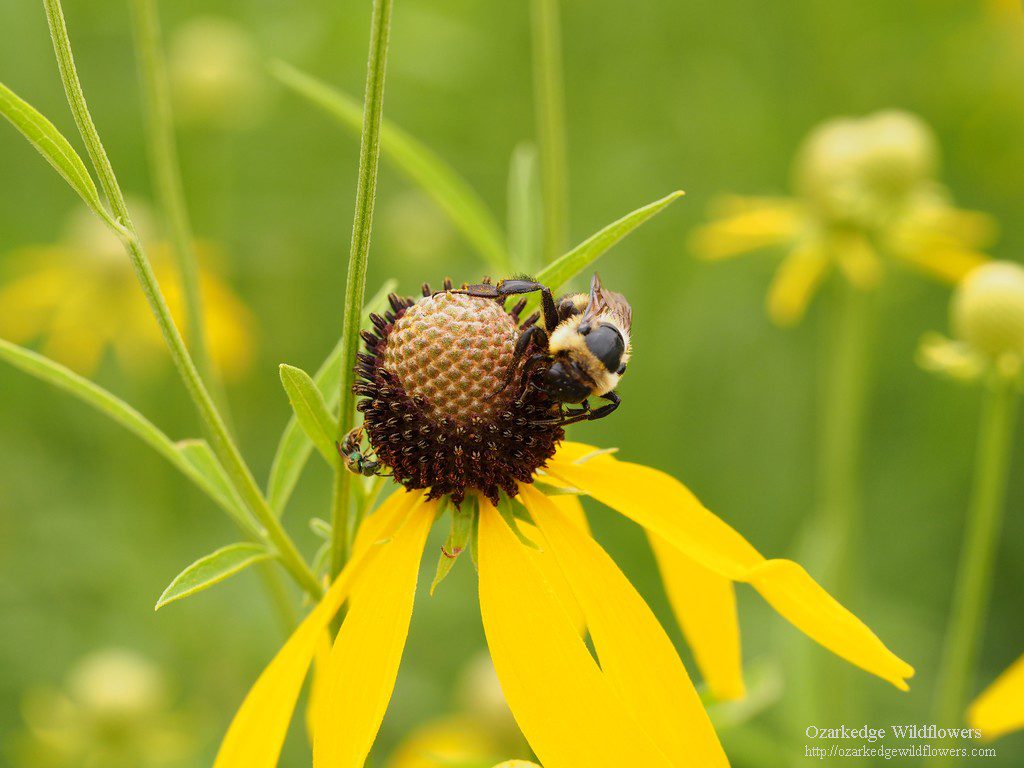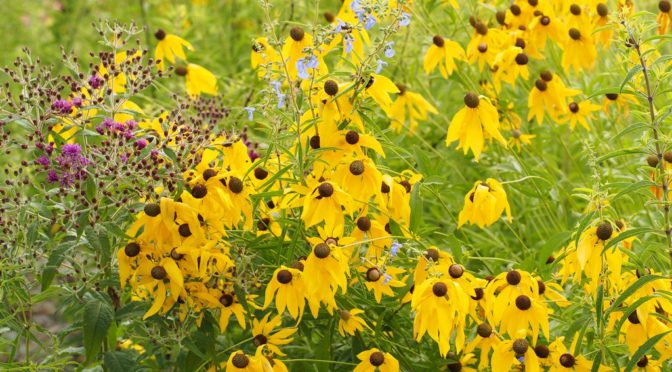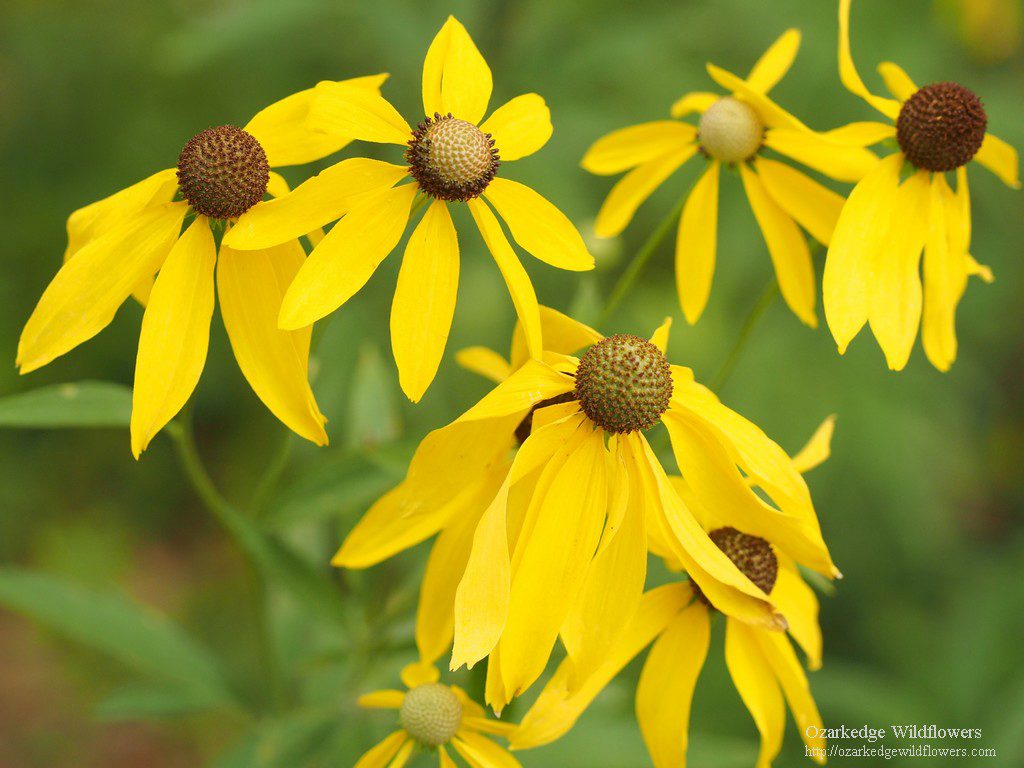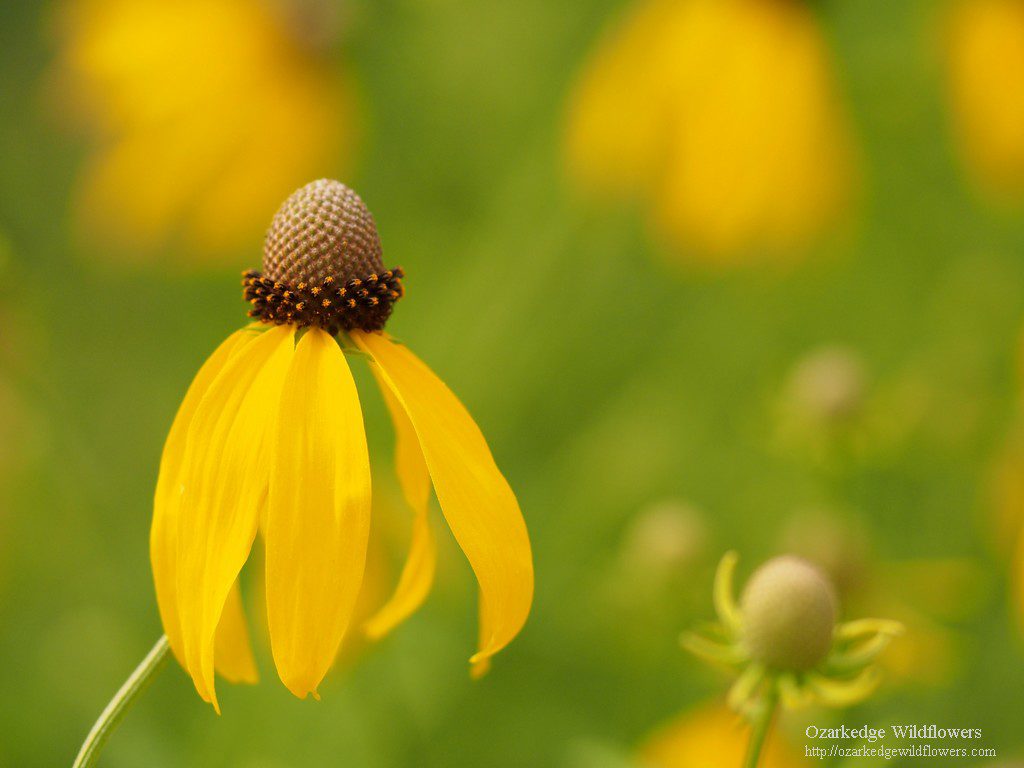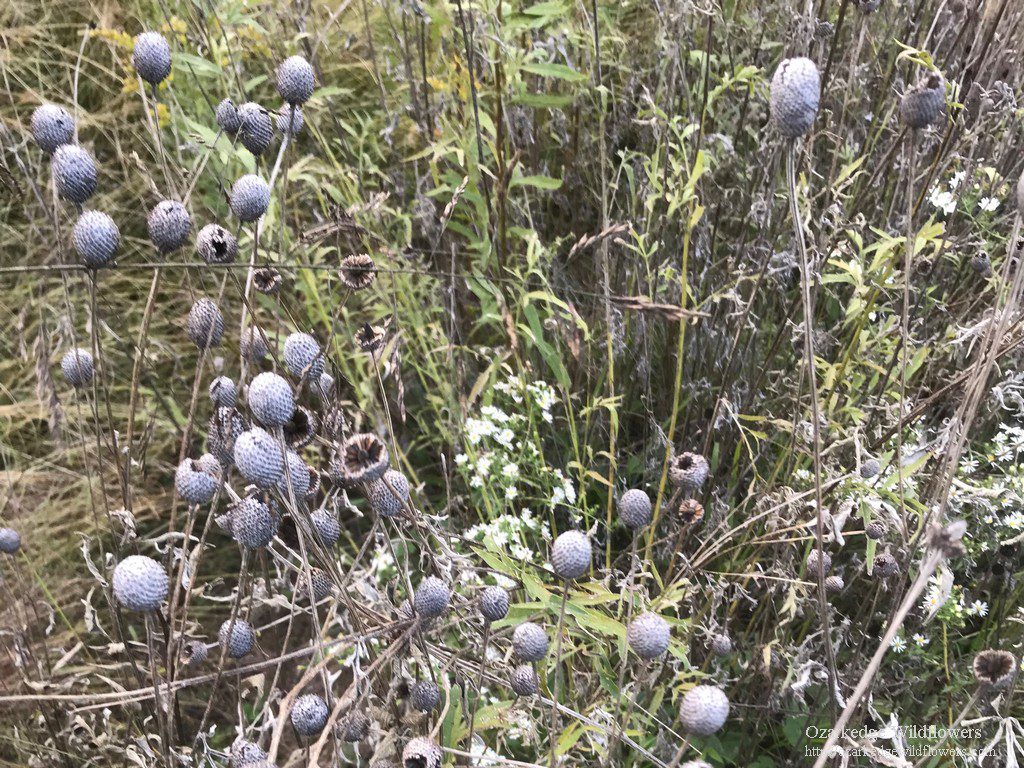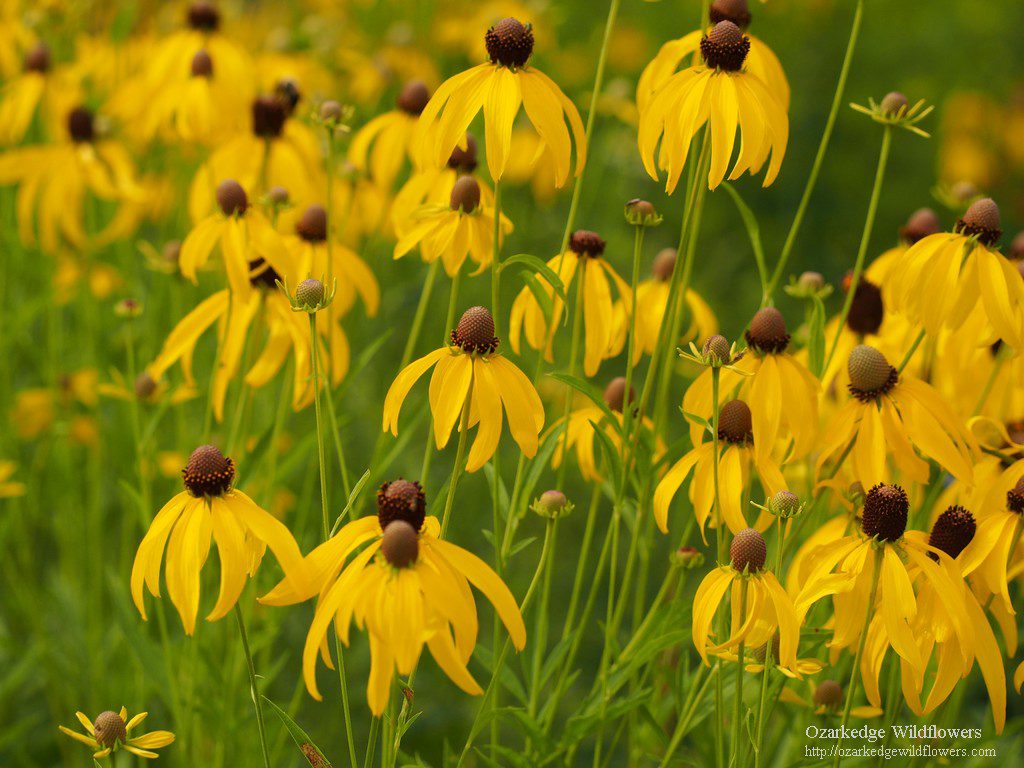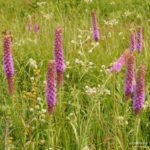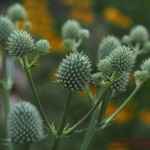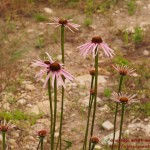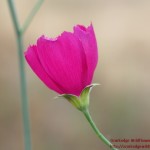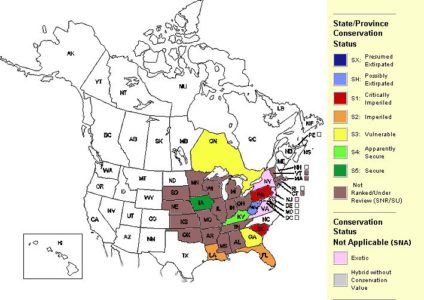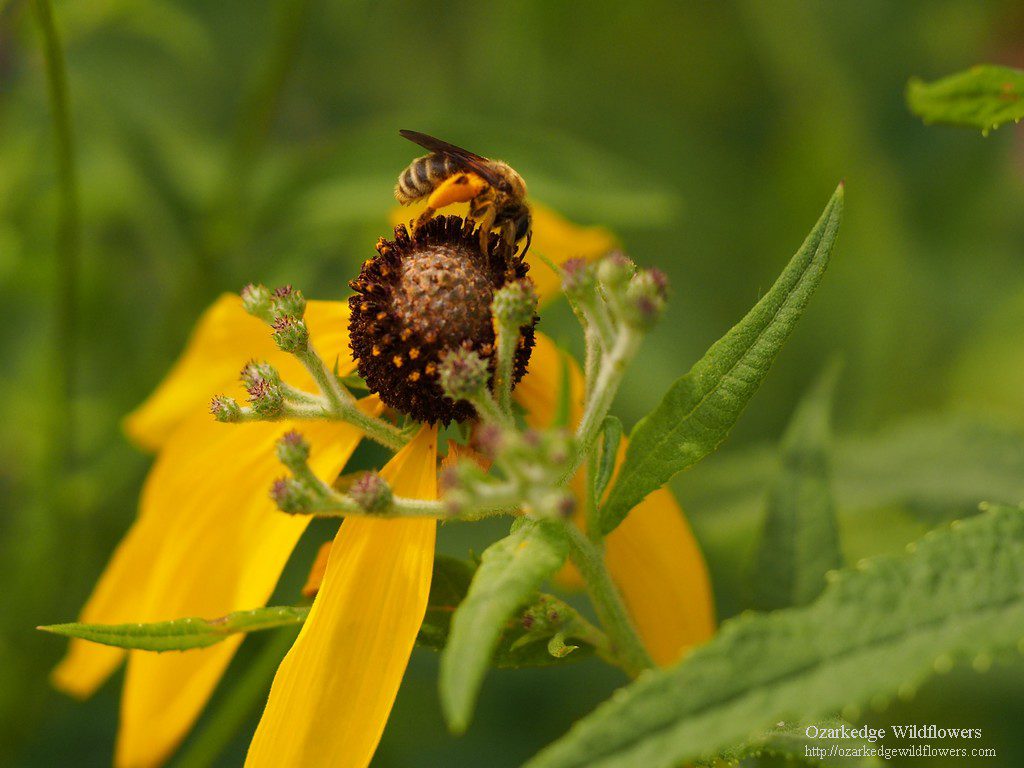This is a wonderful native wildflower. I know you will love it as much as I do. What’s not to love about an easy to grow plant that produces abundant yellow flowers throughout summer, provides nectar to bees, food for goldfinches and a whole lot more.
Latin Name/Common Name- Stearn’s dictionary describes the name ratibida as being obscure. Pinnata means feather-like or pinnately cut leaves. As usual, there are multiple common names for this plant. I prefer to use Gray-headed coneflower. This refers to the unopened buds and the mature seed heads. Other common names include Pinnate prairie coneflower or Yellow coneflower.
Bloom Color- The petals of Gray-headed coneflower are a bright lemony yellow. The color is so pleasing combined with almost any other wildflower.
Description- The basal rosette of Gray-headed coneflower gives rise to fuzzy, hirsute stems in the spring. The leaves are sessile and pinnately divided into 3 to 7 lobes. The drooping yellow petals are actually ray flowers and usually number about 10 to 13. The central head consists of many small disk flowers that gradually open from the base to the top. The young flower head is initially gray (or may have a greenish tint) and then turns brown as the disk flowers open.
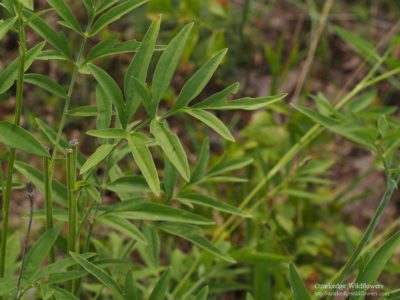
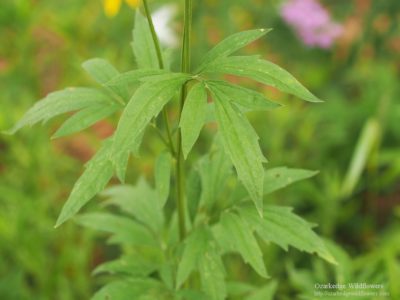
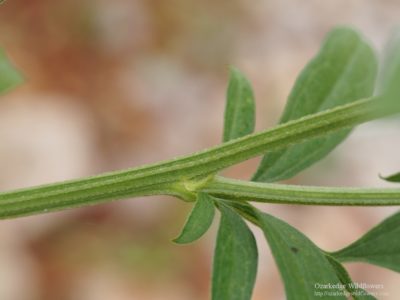
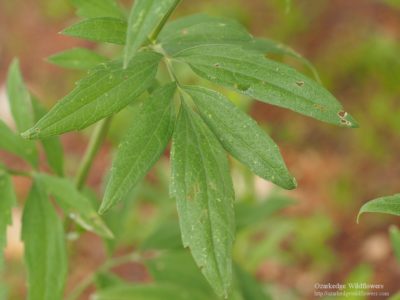
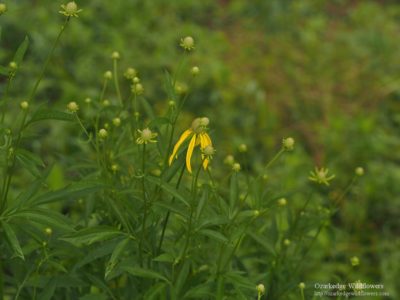
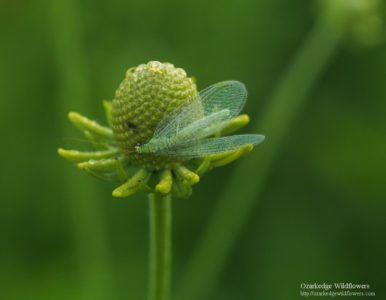
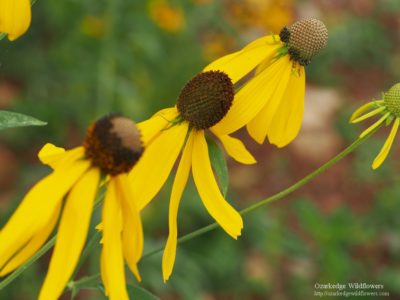
The gray seed heads release an anise scent when handled. This makes gathering seeds in the fall a delightful experience. The seed heads are hard initially, but with maturity, will soften and break apart when rubbed or squeezed. I look forward to gathering seeds from Gray-headed coneflower as one of my most pleasurable fall activities.
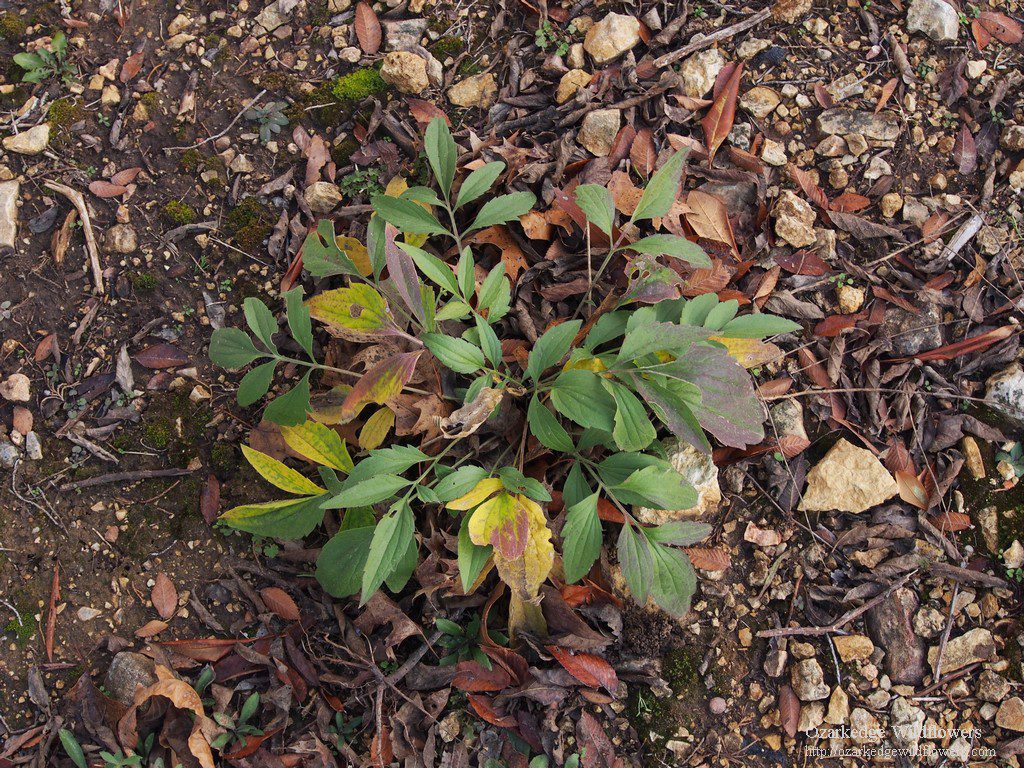
The leaves of the basal rosette persist through the winter. In late fall, they turn beautiful shades of yellow-gold, green, brown and burgundy.
Bloom Time- On Ozarkedge, Ratibida pinnata can be found in bloom throughout June and July, often extending into early August.
Habitat- This is an easy to grow plant. It thrives in full sun or part shade. It’s drought tolerant and blooms profusely year after year. I’ve seen it growing equally well in rocky glades, prairie and woodland edges. This is a great beginner plant for someone who wants to get started in native plant gardening. In addition, it self sows freely. This can be both a desirable or undesirable habit depending on your needs. I’ve found it very rewarding to dig the new plants in spring and transplant them elsewhere on the property or share with friends. Their robust root systems become acclimated quickly and they bloom the second year.
What’s Growing Nearby? Gray-headed coneflower can be found growing with many other prairie plants. The lemony yellow flowers complement white, orange, blue and purple flowers in a wildflower garden. See below some of the combinations from my garden as well as a gallery of some other flower friends I’ve seen growing nearby.
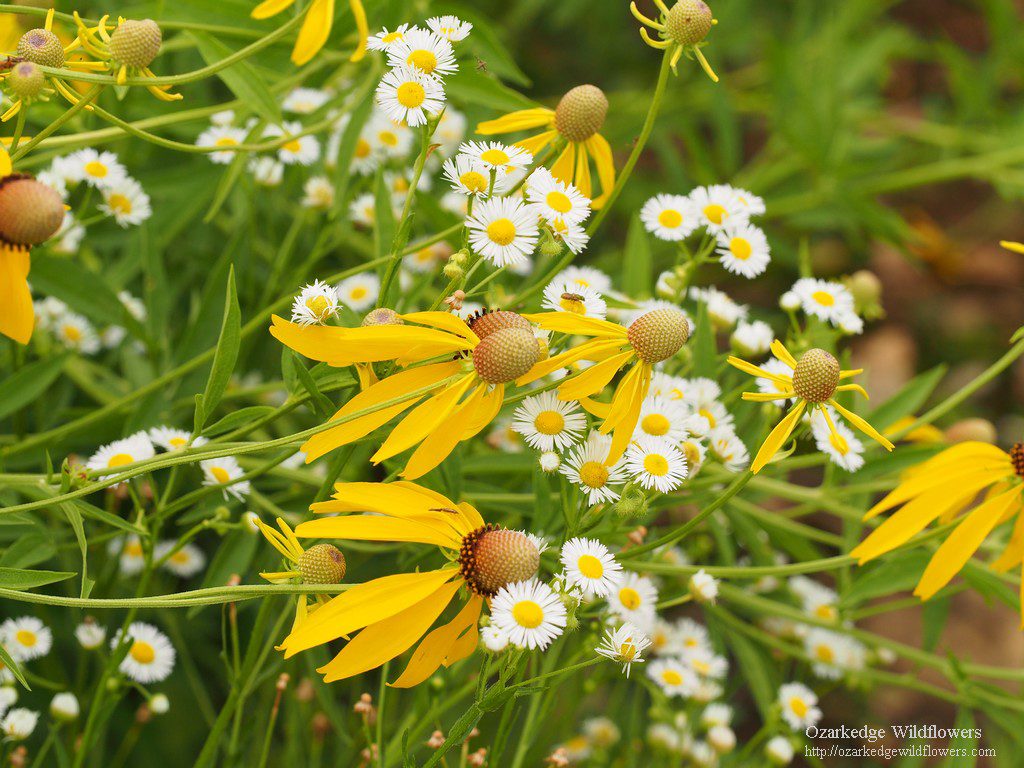
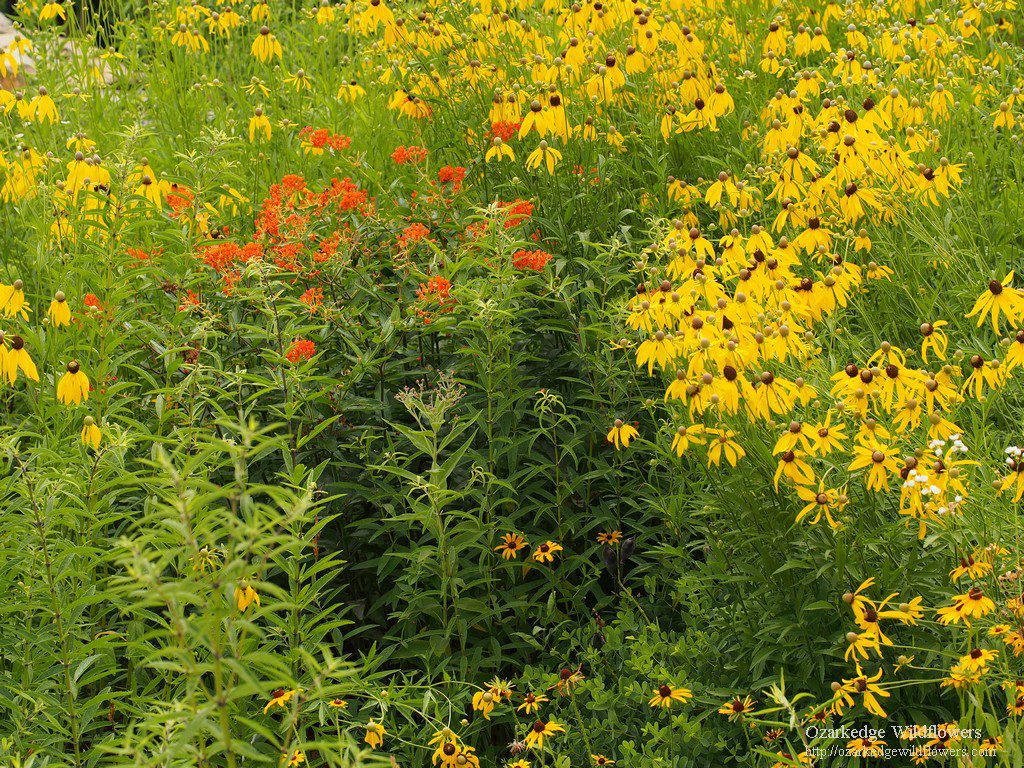
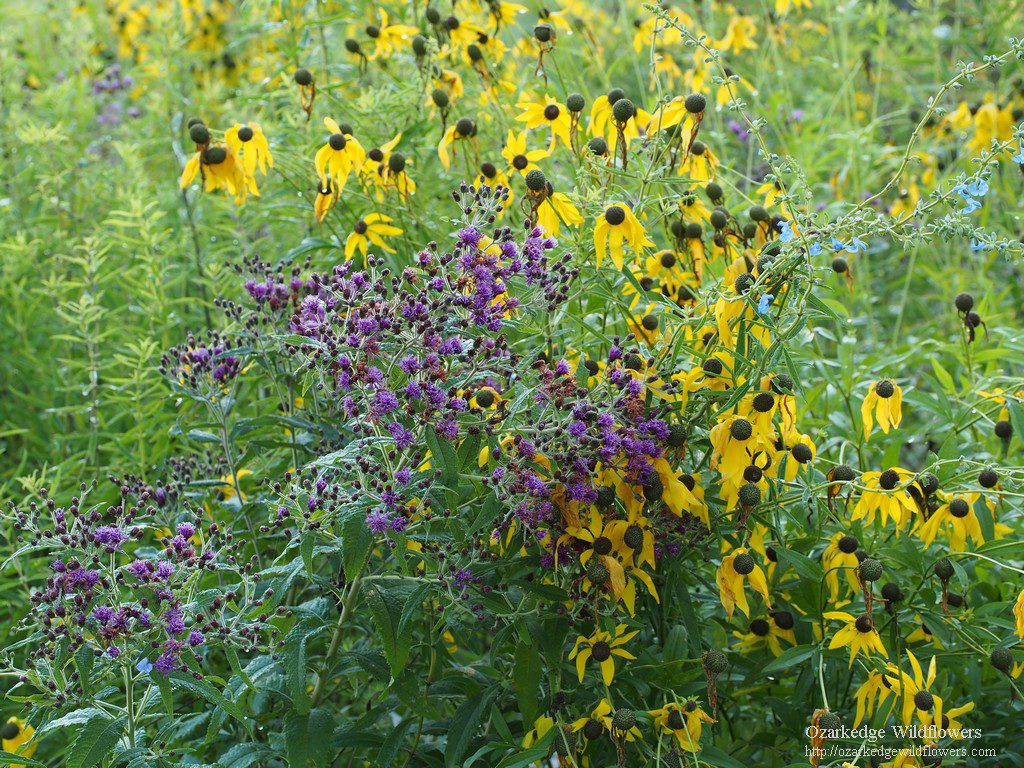
Scroll over the pictures above to see the latin names of a few more native flowers you may find growing near Gray-headed coneflower.
Endangered List- Ratibida pinnata has an extensive range that includes all of the eastern half of the United States excluding North Dakota and Texas. In most of it’s range, the status is Not Ranked by NatureServe. It’s Secure in Kentucky and Apparently Secure in Iowa. Sadly, the status in Pennsylvania and South Carolina is Critically Imperiled and Possibly Extirpated in West Virginia. The USDA Plants Database lists it as Extirpated in Pennsylvania.
*NatureServe. 2018. NatureServe Explorer: An online encyclopedia of life [web application]. Version 7.1. NatureServe, Arlington, Virginia. Available http://explorer.natureserve.org. (Accessed: January 1, 2019 ).
Interesting Tidbits- It’s no secret that growing native plants provides important habitat for insects, songbirds and even mammals. Gray headed coneflower is no exception. It provides food for caterpillars of the beautiful Silvery Checkerspot (Chlosyne nycteis) butterfly and many moths. It’s especially important for bees for both collecting and feeding on pollen. Goldfinches and other songbirds eat the seeds. I suggest growing some Grayheaded coneflowers where you can observe them from a window during the winter. The goldfinches absolutely love the seeds and are a joy to watch as they bounce from one branch to another.
